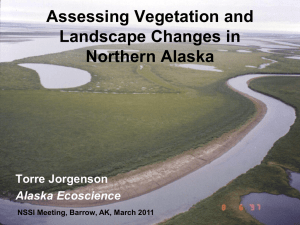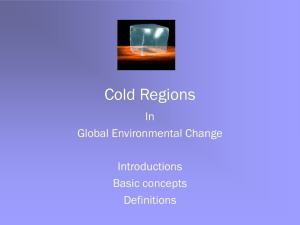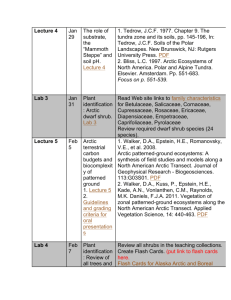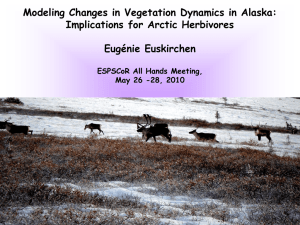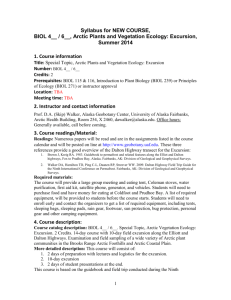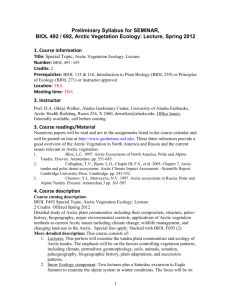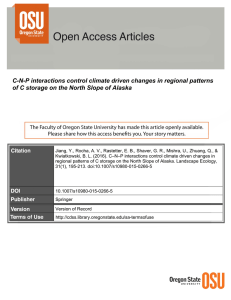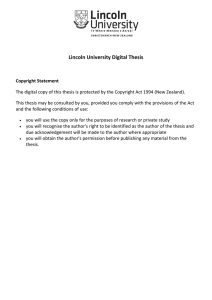Land Forms and Vegetation Several land form and vegetation types
advertisement
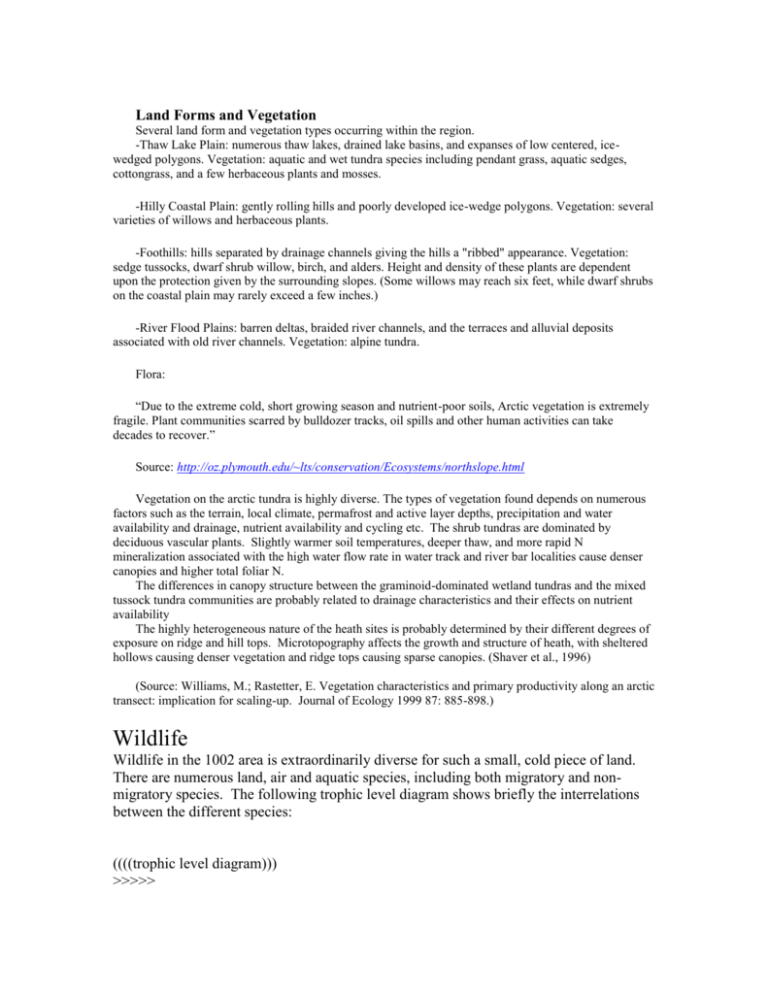
Land Forms and Vegetation Several land form and vegetation types occurring within the region. -Thaw Lake Plain: numerous thaw lakes, drained lake basins, and expanses of low centered, icewedged polygons. Vegetation: aquatic and wet tundra species including pendant grass, aquatic sedges, cottongrass, and a few herbaceous plants and mosses. -Hilly Coastal Plain: gently rolling hills and poorly developed ice-wedge polygons. Vegetation: several varieties of willows and herbaceous plants. -Foothills: hills separated by drainage channels giving the hills a "ribbed" appearance. Vegetation: sedge tussocks, dwarf shrub willow, birch, and alders. Height and density of these plants are dependent upon the protection given by the surrounding slopes. (Some willows may reach six feet, while dwarf shrubs on the coastal plain may rarely exceed a few inches.) -River Flood Plains: barren deltas, braided river channels, and the terraces and alluvial deposits associated with old river channels. Vegetation: alpine tundra. Flora: “Due to the extreme cold, short growing season and nutrient-poor soils, Arctic vegetation is extremely fragile. Plant communities scarred by bulldozer tracks, oil spills and other human activities can take decades to recover.” Source: http://oz.plymouth.edu/~lts/conservation/Ecosystems/northslope.html Vegetation on the arctic tundra is highly diverse. The types of vegetation found depends on numerous factors such as the terrain, local climate, permafrost and active layer depths, precipitation and water availability and drainage, nutrient availability and cycling etc. The shrub tundras are dominated by deciduous vascular plants. Slightly warmer soil temperatures, deeper thaw, and more rapid N mineralization associated with the high water flow rate in water track and river bar localities cause denser canopies and higher total foliar N. The differences in canopy structure between the graminoid-dominated wetland tundras and the mixed tussock tundra communities are probably related to drainage characteristics and their effects on nutrient availability The highly heterogeneous nature of the heath sites is probably determined by their different degrees of exposure on ridge and hill tops. Microtopography affects the growth and structure of heath, with sheltered hollows causing denser vegetation and ridge tops causing sparse canopies. (Shaver et al., 1996) (Source: Williams, M.; Rastetter, E. Vegetation characteristics and primary productivity along an arctic transect: implication for scaling-up. Journal of Ecology 1999 87: 885-898.) Wildlife Wildlife in the 1002 area is extraordinarily diverse for such a small, cold piece of land. There are numerous land, air and aquatic species, including both migratory and nonmigratory species. The following trophic level diagram shows briefly the interrelations between the different species: ((((trophic level diagram))) >>>>> Producers: Phytoplankton Sedges: Tussock, Cottongrass Willow (for nesting too) Mosses Lichens ((Parameters: >>Cannot bear high pressure (quantitative?) >>Excessive water not necessarily good (small plants may drown) –roadside flooding. If permafrost thaws, will promote higher plants like willows. >>Temp affects microbiological processes (0-10 degrees celcius, do better, then more nutrients). >>Plants will die under the platforms area, sunlight gone. >>Some plants insulate permafrost, forming organic mat, helping other plants to grow. >>“The impact from seismic vehicles and lines depends on the type of vegetation, texture, and ice content of the soil, the surface shape, snow depth, and type of vehicle” (arctic.fws.gov/issues1.html) >>Mosses-lichens (insulate): Permafrost underneath destroyed. >>Thaw depths 7-12 cm greater in disturbed plots (“Response of arctic tundra plant communities to winter vehicle disturbance”) Primary Consumers: Caribou Muskoxen Snow Geese: Not in the area Tundra Swan Long-Tailed Duck Sandpiper Lemmings Voles Secondary/Higher Consumers: Polar bear Grizzly Bears Brown Bears Foxes Wolves Wolverines Seals Guillemot >>>>>>>>




